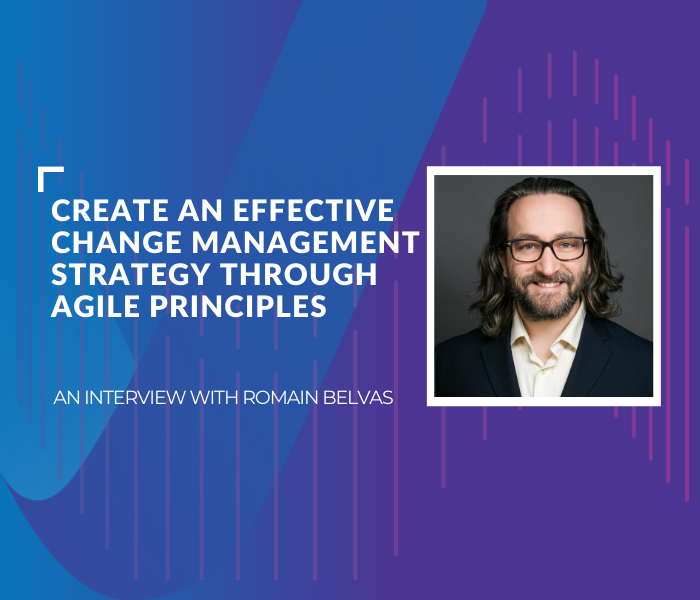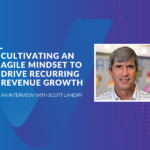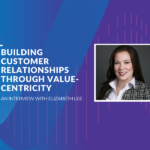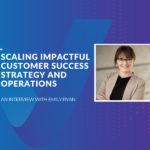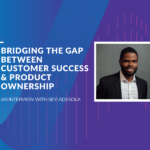Transform With An Agile Approach To Change Management
Change is taking place in your organization every day. You might be rolling out a new product development, running an initiative to re-engineer a process or implementing a new technology to increase efficiency. In all of these efforts, there is one common denominator – people. Your people are your most critical change agents, and they need a leader that empowers them through a thoughtful change management strategy that leverages Agile methodologies to ensure the success of your transformation.
When it comes to implementing Agile for change management, I spoke to seasoned expert, Romain Belvas, Customer Success Technology Consultant at Valuize. Romain has over a decade of experience in Support, Customer Success Management and Operations. He has worked with world-leading technology companies to refine, optimize, and scale systems and processes while driving optimal value. In this interview, Romain discusses the fundamentals of a strong Customer Success (CS) Operations function and how you can leverage Agile methodologies to champion effective change management.
Q: What was your first job? How did you get started in Customer Success?
I started my career working as a Digital Media Specialist at a start-up called Vision Critical, but my first full-time job was way back in 2001 as a Support Technician at Autodesk. My first real taste of Customer Success came much later at a Vancouver-based company called EasyMarkit as a Customer Success Coach.
Q: What excites you about working in the Customer Success domain? How do you think the domain will continue to evolve from here?
Before Customer Success was an established domain, I was musing on the idea of providing support in a much more proactive and dynamic way. When the time came for me to re-enter the private sector, Customer Success was flourishing and provided the perfect opportunity to combine my interest in Business Operations, Support, Marketing and Administration while maintaining a technical focus.
Customer Success is a rapidly evolving domain and while it’s now considered to be an essential function in the SaaS industry, it’s also becoming increasingly significant to many other sectors that utilize a subscription-based revenue model. At the same time, Customer Success is still fairly new and currently in the process of being fully defined. Based on its enormous revenue-driving potential, it’s imperative that Customer Success isn’t treated like a department, but rather, an organization-wide culture and mindset. When that vision becomes a reality, we will be able to fully unlock the power of Customer Success.
Q: In your opinion, what are the most important elements of a strong CS Operations model?
CS Operations is a discipline that is constantly evolving, adapting and iterating – I have never witnessed a one-and-done CS Operations model. That’s why the top two headline elements that come to mind are executive alignment and effective change management strategy. It’s extremely important that all stakeholders are headed in the same direction towards the same shared goal. At the same time, it’s also important to clearly and consistently communicate the what, why and how of your processes and initiatives to all your affected teams. Change is difficult; old habits die hard and it takes time and dedication to enact change across your organization. Ultimately, your success in CS Operations is dependent on your corporate culture and your ability to champion executive alignment and enable an impactful change management strategy.
Q: Where should a company begin when building a Customer Success Operations function and how can they ensure its scalability?
The sooner, the better! I would love to see startups build strong Customer Success Operations logistics from the get-go, but the reality is that this is often untenable until an organization matures and expands. However, I would caution against waiting until the need for CS Operations arises.
Typically, organizations think that adding an additional Customer Success Manager (CSM) for a given number of customers will solve their problems. While CSMs may generate guaranteed short-term results, this is not a scalable approach. It’s important to be deliberate and proactive with setting up a CS Operations motion early so when the need for this function arises, the team has already been instituted, trained, and optimized. Once operational, CS Ops will be able to determine when a human-first or digital-first approach is needed and augment the effectiveness of your cross-functional teams. If you have the systems, processes and team in place, you will be able to quickly accelerate your scale engine once your organization reaches this stage.
Q: Organizational change management is an often overlooked yet critical component of any transformation or organization-wide initiative. What are the pitfalls of an inadequate change management strategy and how can leaders create a robust change management strategy to ensure the success of their transformation?
Undoubtedly, change management is a difficult process for everyone involved. To enable a successful change management strategy, it’s imperative to firstly create an open, safe and blameless environment that fosters growth and learning. People need to feel safe to embrace change. It’s equally important to understand that change will take time – I have seen some organization-wide initiatives take 5 years or more to implement fully and successfully. Depending on the size and scope of the transformation, there’s a good chance that it’s not going to be a sprint; rather, it’s going to be an ultra-marathon and even then, change and realignment will likely occur throughout the course of the initiative. To avoid roadblocks, communicate clearly and repeatedly! You need to articulate why things are changing, break down the overall initiative into small, achievable steps and celebrate team wins along the way. Finding and celebrating these quick wins will go a long way towards transitioning to a new system or process and fostering a positive attitude towards change.
Q: When it comes to transformation and a powerful change management strategy, agility is key. What are the most important considerations that companies should take into account when adopting Agile methodologies? Where should companies begin and how can organizations ensure a successful Agile transformation?
Agile is all about small steps and iteration. On a tactical level, having a Program or Project Manager (Scrum Master) who is able to understand the vision, organize the team and distribute work throughout the transformation journey can be the difference between success and failure. Agile isn’t just a work approach, it’s a mindset and it will be incredibly hard to succeed without first solidifying this notion into your organization’s culture.
Transformation is also a time for optimization. Engaging in a large-scale initiative without filtering out inefficient legacy processes and workflows is a lost opportunity. I’d encourage anyone thinking of starting Agile to read Joy, Inc. – the book accurately captures how storyboarding a project works and how important culture is to the successful implementation of Agile methodologies.
Q: When considering companies like Valuize’s typical client (i.e. late-stage enterprise technology vendors) who may be more accustomed to waterfall-like project management, how can Agile methodologies survive in these companies and support accelerated transformation?
I think many late-stage enterprise companies have a certain degree of familiarity with Agile methodologies. The most important thing to remember is that Agile isn’t about being perfect right out the gate, it’s about time-to-value with a built-in and managed pathway to iteration. I always think of this concept of “move fast, break things,” similar to Joy Inc.’s “fail fast” philosophy. Change takes time but in this economy and market, you need to move fast. In that volatile space, Agile truly flourishes.
Q: Customer data and technology is an increasingly important component of a strong Customer Success organization. How do you recommend that software leaders make the most of their customer data and technology?
An idiom I have come to embrace is; measuring is caring. Unfortunately, some people confuse data with measurement. Data isn’t the same as measurement. You can collect a tremendous amount of data, and yet not measure anything at all! To leverage data effectively, you need a robust consultation period with all of your stakeholders to determine exactly what data is useful in measuring success. Often this will be determined largely by the product, but I recommend including representatives from every department (from Sales all the way to Support) in a cross-functional exercise to determine what data needs to be collected before creating your data strategy.
Bonus Q: What’s your favorite way to spend a Sunday?
My favorite way to spend Sunday is to start with a leisurely brunch, then a nice hike in the backcountry, and end the day with a drink as I get ready for the upcoming week.
Are You Ready To Lead A Successful Organization-Wide Transformation?
Ensure the success of your next transformation with Romain’s top 3 insights:
- Successful transformation starts at the top – if your executives aren’t fully aligned on the vision, mission and implementation strategy of your transformation, it has the potential of failing before it even begins. All senior stakeholders need to be headed towards the same goal in order for this vision to be adopted by the rest of your organization.
- Implementing Agile isn’t about achieving perfection. Your Agile model should encourage learning from failure and making iterative improvements so that you can optimize your approach and processes along the way.
- To successfully implement any transformation through Agile methodologies, you need to create a culture of openness and encourage learning. People need to feel safe to embrace change, and your culture is a crucial aspect of ensuring that your change is successful.
Are you ready to supercharge your change management strategy? Follow these 5 steps to master change management and ensure the success of your organizational transformation.

